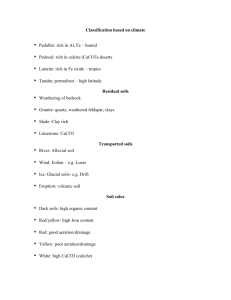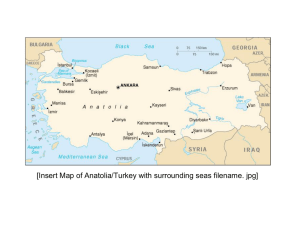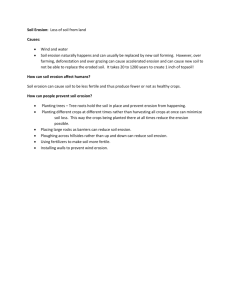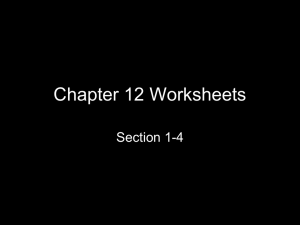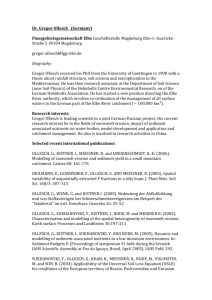Water: Causes of Soil Erosion
advertisement
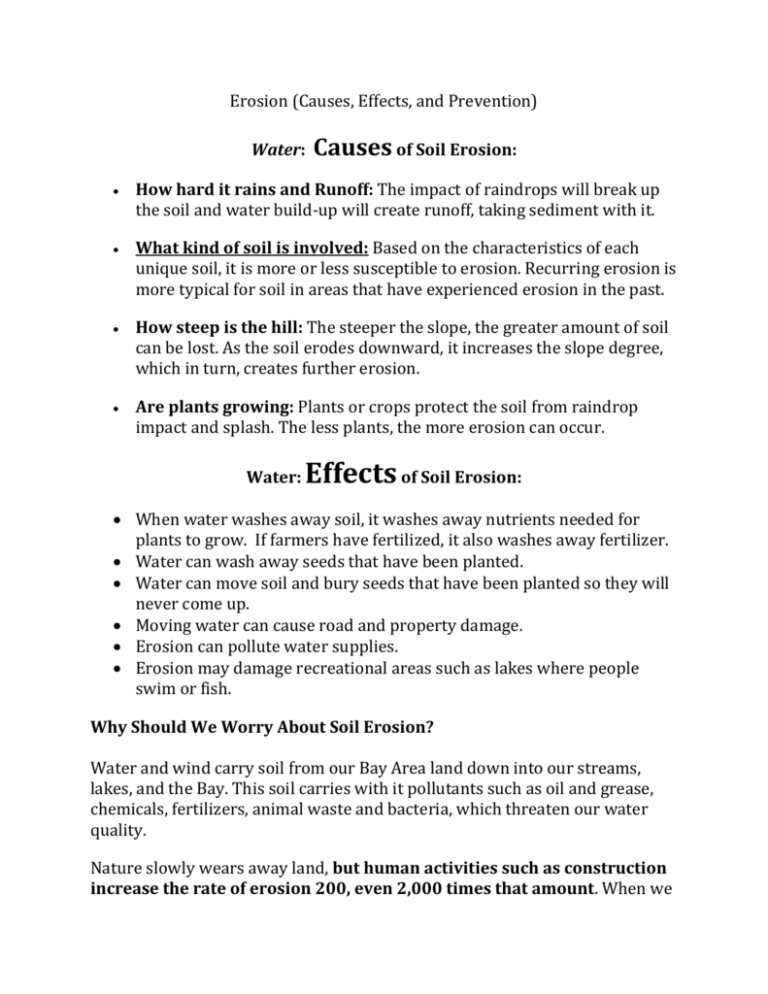
Erosion (Causes, Effects, and Prevention) Water: Causes of Soil Erosion: How hard it rains and Runoff: The impact of raindrops will break up the soil and water build-up will create runoff, taking sediment with it. What kind of soil is involved: Based on the characteristics of each unique soil, it is more or less susceptible to erosion. Recurring erosion is more typical for soil in areas that have experienced erosion in the past. How steep is the hill: The steeper the slope, the greater amount of soil can be lost. As the soil erodes downward, it increases the slope degree, which in turn, creates further erosion. Are plants growing: Plants or crops protect the soil from raindrop impact and splash. The less plants, the more erosion can occur. Water: Effects of Soil Erosion: When water washes away soil, it washes away nutrients needed for plants to grow. If farmers have fertilized, it also washes away fertilizer. Water can wash away seeds that have been planted. Water can move soil and bury seeds that have been planted so they will never come up. Moving water can cause road and property damage. Erosion can pollute water supplies. Erosion may damage recreational areas such as lakes where people swim or fish. Why Should We Worry About Soil Erosion? Water and wind carry soil from our Bay Area land down into our streams, lakes, and the Bay. This soil carries with it pollutants such as oil and grease, chemicals, fertilizers, animal waste and bacteria, which threaten our water quality. Nature slowly wears away land, but human activities such as construction increase the rate of erosion 200, even 2,000 times that amount. When we remove vegetation or other objects that hold soil in place, we expose it to the action of wind and water and increase its chances of eroding. The loss of soil from a construction site results in loss of topsoil, minerals and nutrients, and it causes ugly cuts and gullies in the landscape. Surface runoff and the materials it carries with it clog our culverts, flood channels and streams. Sometimes it destroys wildlife and damages recreational areas such as lakes and reservoirs. Such erosion costs the home construction industry, local governments, and homeowners of the Bay Area millions of dollars a year. We have to pay for damage to roads and property and our tax money has to be spent on cleaning out sediment from storm drains, channels, lakes, and the Bay. As an example, road and home building in the Oakland hills above Lake Temescal filled the lake to such an extent that it had to be dredged in 1979 at a public cost of $750,000. Water: How can we prevent erosion: Plant trees and shrubbery especially near slopes and shorelines. These plants can ( reduce runoff by 50%. Trees can also be used to shade your house. Grow plants on slopes. Grass does not stop erosion on slopes. Plant a rain garden to soak up excess water and stop runoff. Use mulch whenever possible. Bald spots in your yard or garden are bad news. Cover them with mulch and get something growing there ASAP. Build terraces or a retaining wall. Any mid-yard structure will do a good job of stopping water and soil from leaving your yard. Use large stones in streams to prevent stream bank erosion. Do not leave large fields tilled….(plowed with bare dirt showing)

